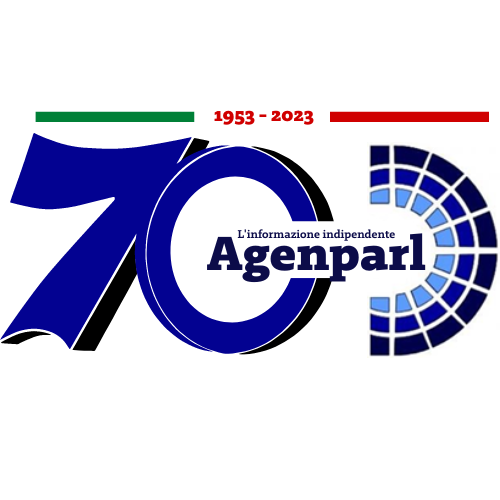 (AGENPARL) - Roma, 27 Novembre 2025
(AGENPARL) - Roma, 27 Novembre 2025(AGENPARL) – Thu 27 November 2025 Image
VAN EYCK: THE PORTRAITS
———————————
Image
Image
21 November 2026 – 11 April 2027
Admission charge
The first ever exhibition of the portraits of the Netherlandish painter Jan van Eyck (active 1422–1441), will open at the National Gallery in winter 2026.
Bringing together for the first time, from across Europe, all nine of the artist’s painted portraits, Van Eyck: The Portraits (21 November 2026 – 11 April 2027) will show half of the twenty or so surviving autograph pictures by one of the supreme figures of the Northern Renaissance.
This is an artist who not only changed the genre of portraiture – but also redefined who got to be portrayed. Capturing a moment when access to art widened, the sitters van Eyck depicted were no longer only kings, queens, or aristocrats but affluent merchants, successful craftsmen and the artist’s relatives.
Exceptional reunions will see the Gallery’s own popular Arnolfini Portrait (1434), the most visited painting page on its website, displayed for the first time ever with a panel showing the same sitter, Portrait of a Man (Giovanni? Arnolfini) (c.1440, Gemäldegalerie, Berlin).
Van Eyck’s newly conserved Portrait of a Man (Self Portrait?) (1433, the National Gallery) will be shown next to the portrait of his enterprising wife Margaret (1439, Groeningemuseum, Bruges), the first known portrait of a woman who was not a member of the aristocracy. For the first time in its history, Vienna’s Kunsthistorisches Museum will allow both its paintings by van Eyck to go on loan at the same time.
Foregrounding new research on the artist’s technique, original frames and cryptic inscriptions, and addressing lingering controversies over his sitters’ identities, the exhibition’s catalogue will be the first monograph ever published on the subject of van Eyck’s portraits – surprising given the vast literature on the artist.
Emma Capron, Curator of Early Netherlandish and German Paintings at the National Gallery, says: ‘Some stories do not have a beginning. Portraiture is one of them. It bursts onto the scene fully formed in the 1430s under the brush of Jan van Eyck. None of the stylised likenesses that preceded his work would pass as a portrait today: you would not recognise their sitters if you walked by them on the street. This changes with van Eyck. Pushing the possibilities of oil painting to convey a convincing illusion of reality, suddenly we are faced with individuals pulsating with life, every single detail of their appearance captured, sitters who look back at us and who speak to us through elaborate and often enigmatic inscriptions. These portraits’ ability to baffle by their precision and liveliness is intact today. Their impact belies their intimate scale. We are really proud and grateful to our lenders to be able to show van Eyck’s pioneering contribution to the rise of portraiture in this once-in-a-lifetime exhibition.’
National Gallery Director, Sir Gabriele Finaldi, says ‘Van Eyck is one of the pillars of the National Gallery’s collection and a foundational figure in the European history of art. The portraits reflect a remarkable sensitivity to his sitters and an astounding technical virtuosity in their execution.’
Exhibition supported by
Image
We are also grateful to the Rick Mather David Scrase Foundation for supporting the research for this exhibition
For more information, visit ## nationalgallery.org.uk ## (http://nationalgallery.org.uk/)
X (formerly Twitter) @NationalGallery
Facebook @NationalGallery
Instagram @NationalGallery
YouTube @NationalGallery
TikTok @NationalGalleryLondon
Threads @NationalGallery
* NOTES TO EDITORS *
* Press view: Wednesday 18 November 2026 *
* IMAGES *
* NG186 *
Jan van Eyck
Portrait of Giovanni(?) Arnolfini and his Wife
Short title: The Arnolfini Portrait
1434
oil on wood
82.2 × 60 cm
© The National Gallery, London
* L1094 *
Jan van Eyck
Margaret, the Artist’s Wife
1439
Oil on oak, 32.6 × 25.8 cm
Municipal Museums Bruges, Groeningemuseum
© Municipal Museums Bruges, Groeningemuseum. Photo: The National Gallery, London
* The National Gallery * is one of the greatest art galleries in the world. Founded by Parliament in 1824, the Gallery houses the nation’s collection of paintings in the Western European tradition from the late 13th to the early 20th century. The collection includes works by Artemisia Gentileschi, Bellini, Cezanne, Degas, Leonardo, Monet, Raphael, Rembrandt, Renoir, Rubens, Titian, Turner, Van Dyck, Van Gogh and Velázquez. The Gallery’s key objectives are to care for and enhance the collection and provide the best possible access to visitors. Admission free.
* The Huo Family Foundation * is a grant-giving foundation based in London. Its mission is to support education, communities and the pursuit of knowledge. The Foundation’s current focus is in three main areas: education; the arts; and science. Through its grants, the Foundation hopes to improve the prospects of individuals, and to support the work of organisations seeking to build a safe and successful future for all society. The Foundation aims to make art more accessible to all through its support for galleries, museums and centres for the performing arts. ## huofamilyfoundation.org/ ## (https://url.uk.m.mimecastprotect.com/s/nbtnCqQn5skXyPWCZf3CEIVJO?domain=huofamilyfoundation.org/)
* Jan van Eyck (active 1422 * – * 1441) *
Jan van Eyck is credited with originating a style of painting characterised by minutely realistic depictions of surface effects and natural light. This was made possible by using an oil medium, which allowed the building up of paint in translucent layers, or glazes.
Little is known of van Eyck’s origins, but he probably came from Maaseik, near Maastricht, and was of the gentry class. He is first heard of in 1422 working in The Hague for John of Bavaria, ruler of Holland. From 1425 he was at Bruges and Lille as painter to Philip the Good, Duke of Burgundy. In 1428 van Eyck was sent to Portugal to paint Philip the Good’s future wife, Isabella of Portugal.
Van Eyck appears to have painted many religious commissions and portraits of Burgundian courtiers, local nobles, churchmen and merchants. A small group of his paintings survive with dates from 1432 onwards. One of his most famous works is the ‘Arnolfini Portrait’, signed and dated 1434. It is thought that his Portrait of a Man may be a self portrait.
* Also on display at the National Gallery at the same time: *
Renoir and Love (3 October 2026 – 31 January 2027)
More information at ## nationalgallery.org.uk ## (https://www.nationalgallery.org.uk/)
* Publicity images * * can be obtained from * ## * https://press.nationalgallery.org.uk/ * ## (https://press.nationalgallery.org.uk/)
* FOR MORE INFORMATION AND IMAGES *
========================================
